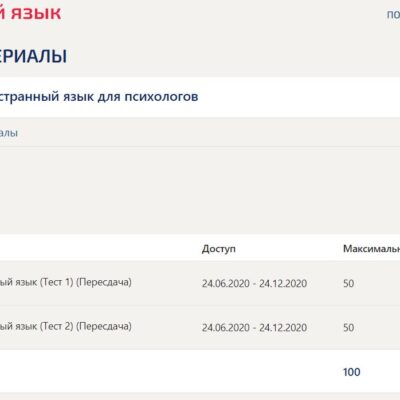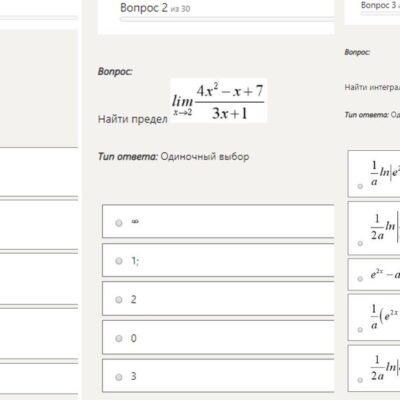Описание
Иностранный язык в профессиональной деятельности тест Синергия>Все ответы 90 из 100 баллов “Отлично”
https://sinerqy.com/list/ – другие ответы здесь
Учебные материалы
— Конспект 1
— Конспект 2-4
Итоговая аттестация
to school yesterday?
Do you walk
Did you walked
Did you walk
Have you walked
emphasizes the set of norms that applies to people who hold particular positions, like flight attendants or instructions.
Behaviorism
Cognitive Psychology
Freudian Psychology
The Socio-cultural Perspective
was developed by Ivan Pavlov, B.F.. Skinner and others. They focused on the observable behavior of humans and other animals rather than subjective thoughts and feelings.
Psychoanalytic theory
Behaviorism
Gestalt Psychology
Humanistic Psychology
assume that individuals evaluate the costs and benefits of various actions and pick the best alternatives in a fairly logical reasoned way. It involves weighing the pros (benefits) and cons (costs) of possible alternatives.
motivational theories
Learning theories
Cognitive theories
Decision-Making theories
is the scientific study of how people think about, influence and relate to others.
Social Psychology
Behavior Modification
Clinical Psychology
Physiological Psychology
emphasize that a person’s behavior depends on the way he or she perceives the social situation. One core idea is that people tend to spontaneously group and categorize objects.
motivational theories
Learning theories
Cognitive theories
Decision-making theories
“Have you visited London?” “…”
Not yet
Ever
Already
Not
“I don’t like coffee.” “… do I.”
So
Neither
Either
No
“Did you speak to Juliet?” “No, I’ve … seen her.”
nearly
hardly
often
always
According to … decisions are based on the worth and the probability of the outcome.
expectancy-value theory
social exchange theory
evolutionary social psychology
social learning theory
Attribution theory analyzes how we …
make decisions and solve problems
make impressions on others
explain people’s behavior
form attitudes about issues
Automatic thinking is…
thinking that is nonconscious, unintentional, involuntary, and effortless
a type of thinking in which people focus on the properties of objects without considering their surround context
a type of thinking in which people focus on the overall context, particularly the ways in which objects relate to each other
thinking that is conscious, intentional, voluntary, and effortful
Can you tell me when … ?
the train leaves
does the train leave
leaves the train
does leave the train
He’s interested … learning Spanish.
on
to
in
for
hidden curriculum
имплицитные знания
неписаные правила
страхи и фобии
неприятие социальных норм
I … tell anyone if you tell me.
wouldn’t
won’t
not
If I … enough money, you know I’d lend it to you.
have
would
had
If there’s any cake left I … another piece.
had
would have
‘ll have
If you had three wishes, what … you wish for?
did
would
will
informative influence
информирующее влияние
влияние информации
информация влияния
влияние на информацию
Internal attribution is…
the inference that a person is behaving in a certain way because of something about the person, such as attitude, character, or personality
a description of the way in which people explain the causes of their own and other people’s behavior
the inference that a person is behaving a certain way because of something about the situation he or she is in
culturally determined rules about which nonverbal behaviors are appropriate to display
internalization
принятие элементов поведения или культуры
внутренние процессы организма
личное отношение к чему-либо
общественное поведение
Is Jo … Chris?
taller that
taller
as tall as
more tall
misinformation effect
эффект дезинформации
скрытая угроза
информационное влияние
неприятие общественного поведения
Observational method is…
the technique whereby a researcher observes people and systematically records measurements or impressions of their behaviour
the method by which researchers attempt to understand a group or culture by observing it from the inside, without imposing any preconceived notions they might have
the way in which people perceive, comprehend, and interpret the social world
the study of how we form impressions of and make inferences about other people
Overconfidence barrier is…
the fact that people usually have too much confidence in the accuracy of their judgments
a description of the way in which people explain the causes of their own and other people’s behavior
the study of how we form impressions of and make inferences about other people
the inference that a person is behaving in a certain way because of something about the person, such as attitude, character, or personality
peer pressure
давление со стороны сверстников
физическое давление
общественная ноша
совместные интересы
She … me to go to school.
told
said
suggested
made
She looks … she’s going to be sick.
as if
as
likes
if
Social cognition is…
how people think about themselves and the social world; more specifically, how people select, interpret, remember, and use social information to make judgments and decisions
the technique whereby a researcher observes people and systematically records measurements or impressions of their behavior
the method by which researchers attempt to understand a group or culture by observing it from the inside, without imposing any preconceived notions they might have
the inference that a person is behaving in a certain way because of something about the person, such as attitude, character, or personality
Social influence means …
the effect that the words, actions, or mere presence of other people have on our thoughts, feelings, attitudes, or behavior
the scientific study of the way in which people’s thoughts, feelings, and behaviors are influenced by the real or imagined presence of other people.
the way in which people perceive, comprehend, and interpret the social world
the method by which researchers attempt to understand a group or culture by observing it from the inside, without imposing any preconceived notions they might have
social interactions
общественные отношения
социальная структура
общественная работа
общественная нагрузка
social rejection
социальное неприятие
социальное влияние
социальная работа
общественное мнение
socialization
установление общественных отношений
социальное поведение
социальные блага
социальная работа
The process of eliciting information from others that support a schema is known as (the) …
confirmatory hypothesis testing
self fulfilling prophecy
priming effect
illusory correlation
The tree … by lightning.
was flashed
struck
was struck
flashed
Tim … work tomorrow.
isn’t going
isn’t
isn’t going to
isn’t to
Which sentence is correct?
I don’t believe it! You can’t had failed your exam!
I don’t believe it! You can’t have failed your exam!
I don’t believe it! You can’t failed your exam!
Which sentence is correct?
It mays be him. He’s about that height.
It may be him. He’s about that height.
It may to be him. He’s about that height.
Which sentence is correct?
It’s six o’clock. She must have left work by now.
It’s six o’clock. She must have leave work by now.
It’s six o’clock. She must leave work by now.
Which sentence is correct?
Joe might be to play football at the moment.
Joe might be playing football at the moment.
Joe might be play football at the moment.
Which sentence is correct?
That virus may of come from an app.
That virus may have come from an app.
That virus may to have come from an app.
Which sentence is correct?
This writing is terrible. That can being an ‘e’, but I’m not sure.
This writing is terrible. That can be an ‘e’, but I’m not sure.
This writing is terrible. That could be an ‘e’, but I’m not sure.








